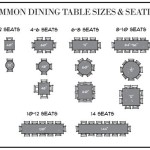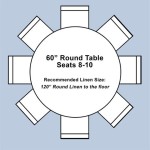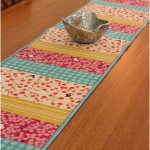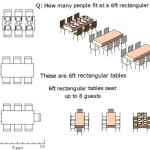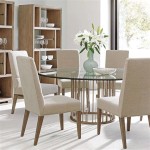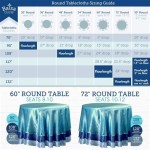Who Sits At The Head Table: A Wedding Reception Guide
The seating arrangement at a wedding reception is a significant aspect of the event's planning. It influences the overall ambiance, facilitates conversation, and demonstrates respect for important individuals. One of the most prominent seating arrangements is the head table, also known as the bridal table. The head table typically accommodates the wedding couple and other important members of the wedding party. Deciding who sits at the head table requires careful consideration of tradition, relationships, and personal preferences.
The traditional configuration of the head table involves the wedding couple, their immediate family, and members of the wedding party. However, modern weddings often deviate from these conventions to reflect the unique dynamics of the couple's relationships. The decision-making process should prioritize creating a comfortable and enjoyable experience for those seated at the head table, as they are at the center of attention during the reception.
Traditional Head Table Arrangement
The traditional head table arrangement prioritizes the wedding couple and their immediate families. Conventionally, the bride and groom are seated at the center of the table. To the bride's right is traditionally seated the groom's mother, followed by the groom's father. To the groom's left is traditionally seated the bride's father, followed by the bride's mother. This arrangement acknowledges the parents' role in raising the couple and their contribution to the wedding celebration.
Adjacent to the parents, the bridal party members are typically seated. The maid of honor is seated next to the bride's mother, and the best man is seated next to the groom's father. This arrangement is intended to keep the key members of the wedding party close to the couple, allowing them to offer support and assistance throughout the reception. Further down the table, the remaining bridesmaids and groomsmen are seated, alternating between each side to maintain a balanced representation. Spouses or partners of the wedding party members are traditionally seated at guest tables rather than the head table, to make room for the bridal party.
This traditional arrangement offers several advantages. First, it adheres to established etiquette, which can be important for families who value formality. Second, it provides a clear visual representation of the couple's closest relationships. Third, it allows for ease of introductions and facilitates conversation among those seated at the table. However, this arrangement may not be suitable for all couples, particularly those with complex family dynamics or a desire for a more modern approach.
Modern Variations and Considerations
Many modern couples are choosing to deviate from the traditional head table arrangement to better reflect their personal preferences and family circumstances. One common variation is to include spouses or partners of the wedding party members at the head table. This can create a more inclusive and comfortable atmosphere, particularly if the wedding party members are in long-term relationships. However, this may require a larger table or a different seating configuration to accommodate the additional guests.
Another variation is to forgo the traditional head table altogether and opt for a sweetheart table. A sweetheart table is a small table for just the bride and groom. This allows the couple to enjoy a private moment together during the reception and can be particularly appealing to couples who prefer a more intimate setting. It also eliminates the need to navigate complex family dynamics and seating arrangements.
Family dynamics play a significant role in determining the head table arrangement. In cases of divorced parents, it may be more comfortable to seat each parent at separate tables with their respective families and friends. If the couple is particularly close to a stepparent, they may choose to include them at the head table. However, this decision should be made with sensitivity and consideration for the feelings of all involved.
Consideration should also be given to the comfort and preferences of the individuals being seated at the head table. Some people may feel uncomfortable being seated in a prominent position, while others may prefer to be closer to certain family members or friends. It is important to communicate with potential head table guests to gauge their preferences and ensure that they feel comfortable with the proposed arrangement. Open communication and compromise are key to creating a head table arrangement that is both functional and enjoyable for everyone involved.
The size and shape of the reception venue may also influence the head table arrangement. Some venues may have limited space, which may restrict the size of the head table. Other venues may offer alternative seating configurations, such as round tables or lounge areas, that can be incorporated into the reception design. The couple should work with their venue coordinator to determine the best head table arrangement for their specific needs and preferences.
Alternatives to the Traditional Head Table
Several alternatives to the traditional head table can be considered, offering unique approaches to seating arrangements. One popular alternative is the "king's table" or "family table." This involves seating the wedding couple and their immediate family members, including siblings and their spouses or partners, at a long, rectangular table. This arrangement creates a sense of unity and intimacy, allowing the couple to share their special day with their closest loved ones.
Another alternative is to create multiple smaller tables for the wedding party and their guests. This can be achieved by seating each bridesmaid and groomsman at a separate table with their dates or spouses, along with other friends or family members. This arrangement allows for more interaction and conversation among guests and can create a more relaxed and informal atmosphere. It also eliminates the need for a formal head table and can be particularly appealing to couples who prefer a less traditional approach.
A "mingling head table" is another option, where the wedding party remains unseated for a significant portion of the reception. The wedding party will mingle with guests instead of sitting at a designated table. The wedding couple can still have a sweetheart table, but the wedding party members will circulate throughout the reception, interacting with guests and participating in the festivities. This arrangement promotes a more social and interactive atmosphere and can be particularly appealing to couples who want to ensure that their wedding party members are actively involved in the celebration.
Regardless of the chosen arrangement, it is essential to clearly communicate the seating plan to guests and venue staff. This can be done through seating charts, place cards, and verbal instructions. Clear communication helps to avoid confusion and ensures that guests are seated in a timely and efficient manner. The couple should also designate a point person, such as a wedding planner or family member, to address any seating-related issues that may arise during the reception.
Ultimately, the decision of who sits at the head table is a personal one that should be made in consultation with the couple's families and wedding party. By carefully considering the various factors involved, the couple can create a head table arrangement that is both functional and meaningful, contributing to a memorable and enjoyable wedding reception. The approach taken should align with the overall vision for the wedding, reflecting the couple's values and preferences.
The allocation of seats at the head table transcends mere logistical planning. It signifies the acknowledgement of relationships and the honoring of key individuals in the couple’s lives. It mirrors the balance between tradition and modernity, allowing the couple to personalize their celebration while respecting familial expectations. Thoughtful consideration ensures that the head table fosters an atmosphere of joy, connection, and shared celebration, enriching the entire wedding experience for the couple and their guests.

Wedding Head Table Seating Who Gets A Spot

Wedding Head Table Seating Who Gets A Spot

Who Sits At The Head Table During Wedding Reception

Wedding Head Table Seating Who Gets A Spot

Who Sits At The Head Table Wedding Reception Weddings

Who Sits At The Head Table Wright House

Wedding Head Table Seating Who Gets A Spot

Head Table Kings And Sweetheart What You Need To Know Magnificent Moments Weddings

Wedding Head Table Seating Who Gets A Spot

5 Reasons To Ditch A Head Table For Harvest
Related Posts

